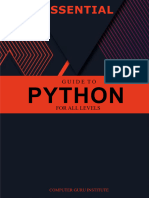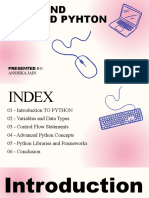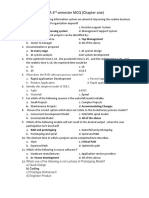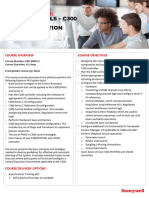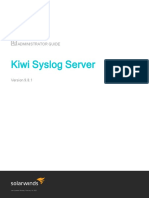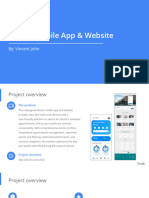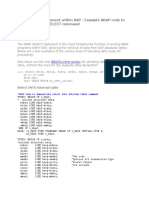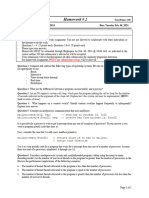0% found this document useful (0 votes)
43 views10 pagesPython Book
The document provides an overview of Python, a high-level programming language known for its readability and versatility across various domains such as web development and data analysis. It covers key concepts including variables, control flow, functions, object-oriented programming, file handling, error management, and the use of libraries and frameworks. The conclusion emphasizes Python's popularity due to its simplicity and strong community support.
Uploaded by
M HassamCopyright
© © All Rights Reserved
We take content rights seriously. If you suspect this is your content, claim it here.
Available Formats
Download as PDF, TXT or read online on Scribd
0% found this document useful (0 votes)
43 views10 pagesPython Book
The document provides an overview of Python, a high-level programming language known for its readability and versatility across various domains such as web development and data analysis. It covers key concepts including variables, control flow, functions, object-oriented programming, file handling, error management, and the use of libraries and frameworks. The conclusion emphasizes Python's popularity due to its simplicity and strong community support.
Uploaded by
M HassamCopyright
© © All Rights Reserved
We take content rights seriously. If you suspect this is your content, claim it here.
Available Formats
Download as PDF, TXT or read online on Scribd
/ 10

















































